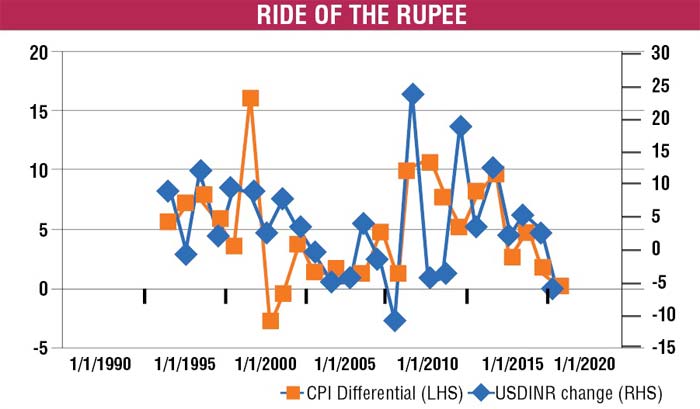This was published in The Economic Times on 27th of June 2018
Media reports of the government offloading a substantial chunk of its shareholding in IDBI Bank to Life Insurance Corporation of India (LIC) has sparked off another round of passionate debate on the appropriateness of the action. To be sure, LIC has been an equity investor of last resort for the government for many years — periodically picking up the slack in capital market sentiments for the government’s interventions. Primarily, this has been around the disinvestment programme, with LIC consistently bailing out share sales in PSUs with lukewarm investor interest (a recent case in point being the Hindustan Aeronautics Ltd (HAL) IPO).
One objection to this has been a purists’ lament around whether such share sale really means “disinvestment” of government equity. However, the bigger and arguably a more pertinent point is around whether LIC is being amiss in its fiduciary responsibility as an insurer by deploying capital in sub-par investments, just to bail out the government. IDBI Bank, with its stressed balance sheet (28% gross NPA), is symptomatic of such “subpar investments”. The latter argument has strong merit — the capital available with LIC is essentially premia paid by its policyholders. LIC invests this capital in order to generate enough surpluses to fund claims, death benefits and maturity proceeds to policyholders and their beneficiaries. To the extent LIC makes sub-optimal investment decisions, like an investment in IDBI Bank as the critics are pointing out, returns on LIC’s investment portfolio could suffer. That in turn would reduce the returns that it can generate for its policyholders. Ergo, it is unfair on the policyholders for LIC to be rescuing the government’s budget by picking up such sub-optimal investments.
Keeping aside the merits of the particular investment for a moment, the objection, purely at a headline conceptual level too, has merits. However, skinned one level below, it misses a crucial variable — 100% government ownership of LIC, which makes all claims on it essentially sovereign obligations. Once taken into account, much of the critique becomes theoretical rather than real.
LIC is an insurance company, and insurance policies that are bought can broadly be classified in three categories.
One, traditional insurance policies — these are primarily for protection, ie, protection of the immediate family due to the death of the policyholder. Some variants of these policies (variously known as Endowment or Money-back in India) involve return of premium paid/sum assured on maturity of the policy — returns are usually not guaranteed (though sometimes they are in certain policies) and are not the primary objective of the policy.
Two, unit-linked policies, or ULIPs. These are as much investment products as they are for protection, and the performance of ULIP is linked to financial markets — usually a mix of equity and fixed income.
Now, how is this relevant? It goes back to the essential point on “fairness”. Bulk of insurance policies sold by LIC comes under the first category above. What that means is that LIC is on the hook for committed liabilities — death claims, maturity proceeds and guaranteed returns — wherever applicable in terms of the respective policy features. Technically, the ability of LIC to fund these obligations is determined by the performance of its investment portfolio. Practically though, all these obligations are sovereign obligations of the Government of India (GOI). In a curious way, but effectively, it isn’t very different from GOI raising money via a bond issuance from the public and investing that money to (say) infuse capital into IDBI Bank. The primary difference is in the balance sheet treatment — a bond issuance by GOI would land up in the Union Budget, while fund infusion by LIC is “off budget” in nature. Not the best, most transparent way of doing things, but given various constraints, not an option that would kill. Irrespective of how the underlying portfolio performs, LIC (and by proxy, GOI) is liable to pay up the committed claims of policyholders. For policyholders, this means they have taken no more than sovereign risk — the highest quality credit risk that a domestic investor can invest in. The doomsday scenarios around betrayal of fiduciary trust that critics are panning the government for are more paper than reality.
Which leaves us with the last piece — ULIPs — where LIC’s role as a fund manager is as important as its role as a risk underwriter. It is here that inclusion of sub-optimal investments would fly against the grain of treating policyholders fairly, as policyholder returns are linked to performance of the underlying portfolios. To the extent of inclusion of (say) IDBI Bank, or any other disinvestment bailouts, result in lower returns in ULIPs, the critique is valid. The saving grace though is ULIPs form a relatively small part of total premia collected by LIC (~10-15%), and hence the impact of a few high-profile cases like IDBI Bank on the overall portfolio is marginal. However, it is a pertinent concern, and relevant regulator (IRDA) would need to take a look at the same. At the same time, competitive pressures on performance in ULIPs would ultimately be the best antidote to sub-par performance of LIC ULIPs.
There are seldom any perfect answers to tough choices in public policy-making, rescuing public sector banks in India is one such instance. Using LIC as a vehicle disturbs the purist, but perhaps only making the best of a tricky situation today.

